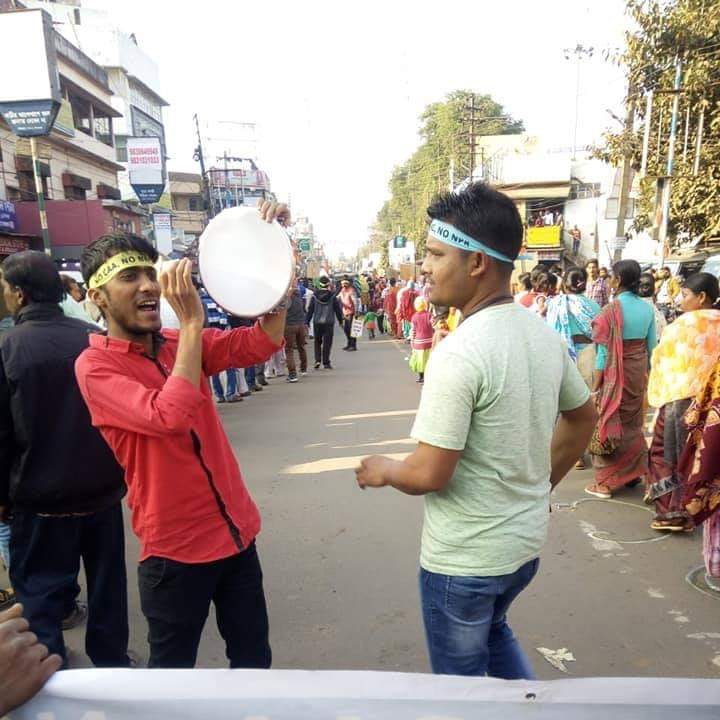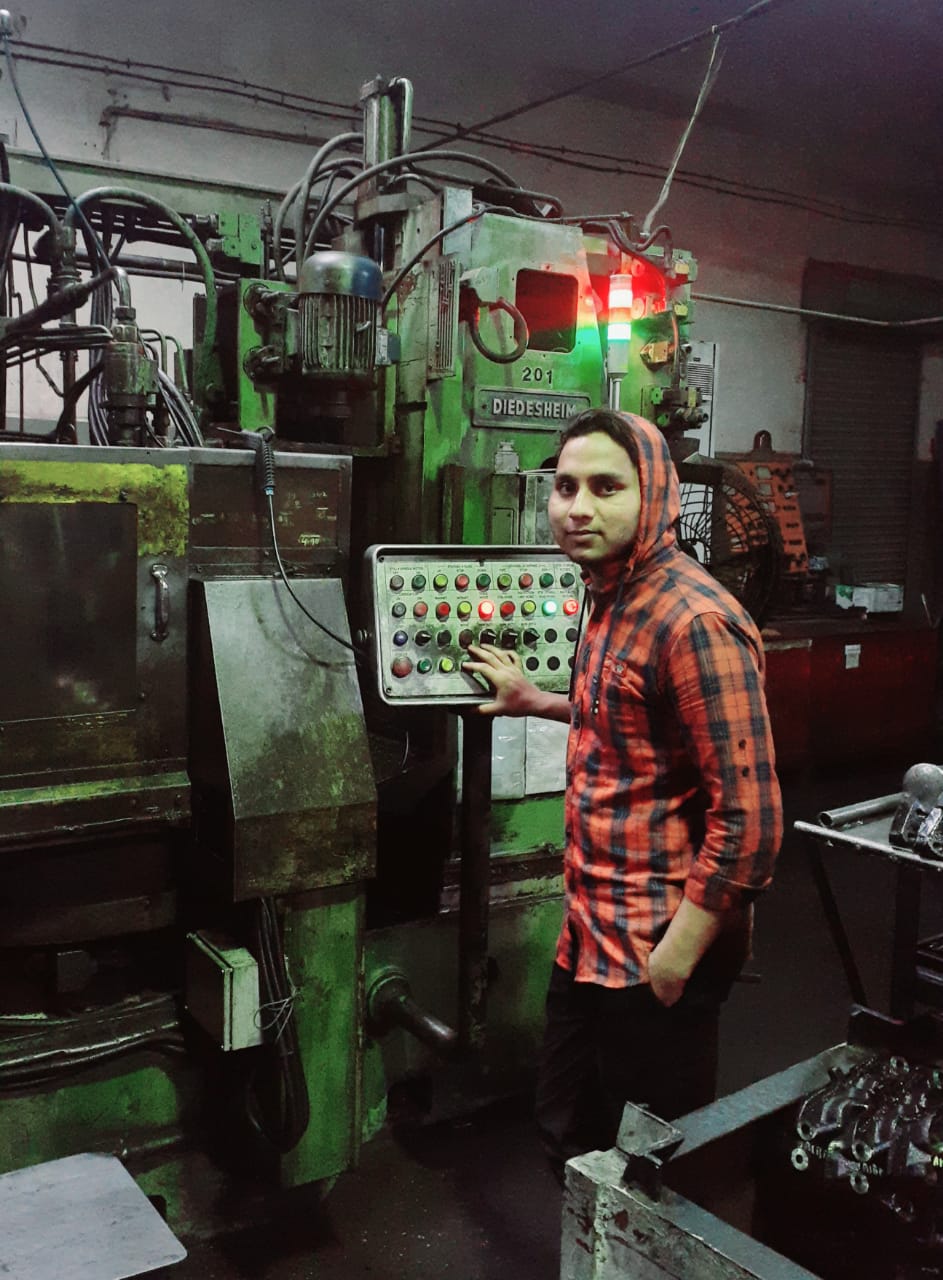Over a million migrant workers returned to rural Bengal in the lockdown. Can MGNREGS alone support them?
Till June end, at least 1.3 million Bengali migrant labourers returned to the state due to the lockdown in view of COVID-19 pandemic. All the returnee migrants Gaon Connection spoke to in West Bengal’s Birbhum district are struggling to find work. Their only hope is the National Rural Employment Guarantee Scheme, but the work is hard to come by.


Villagers crossing the Brahmani river in Birbhum, en route the nearest urban area to find work opportunities. Photo: Aritra Bhattacharya
It’s been two months that Mohammad Alam, a resident of Muraroi-II block in West Bengal’s Birbhum district is jobless. Earning Rs 800-850 a day as a migrant construction worker in Kerala’s Kottayam, Alam used to send Rs 15,000 a month to his family, over 2,500 kilometres away. But that was before the nationwide lockdown came into force from March 25.
He returned home from Kerala in mid-May and has been jobless ever since. “I used to send 14-15 thousand rupees every month to my family when I was away. I returned mid-May and I have not found any work at all, not even in surrounding villages,” he told Gaon Connection. “We’ve exhausted all our savings and are making do with rice and grains from the ration shop. But how long can we go on like this!” he wondered.
Subir Das from Mohammed Bazar block in Birbhum is another migrant construction worker who returned from Bengaluru in Karnataka and is looking for work. He has pinned his hopes on the monsoon.
“The rains have been good so far. We hope to find some work when transplantation of paddy from nurseries to the fields begin,” he said. “Wages here, however, are less (Rs 200-220 a day) compared to what we get in Karnataka (Rs 700-750 per day), but it will put some money in our hands,” he added. Alam and Das are a part of the huge labour force — 1.3 million migrant workers employed in other states – who have returned to their home state West Bengal between March and end of June, as documented in the state government’s data. But, activists assisting returnee migrant workers claim the actual number of returnee migrants is much higher, and that more of them are returning every day.
For instance, the government data on migrant labourers who returned to Birbhum district till the end of June stands at 45,000, but activists reckoned the figure was close to 60,000-65,000. Gaon Connection, during a visit to Birbhum in the first week of July, spoke to several migrant labourers who returned since the nationwide lockdown was imposed to combat the spread of the coronavirus. Most of them said they were unable to find any work since their return. Some are still struggling to return home.
“Only last week, a man who worked at a construction site in Sivaganga (in Tamil Nadu) called our helpline, saying he, his wife and their 15-month-old daughter were desperate to come home,” Mohammad Ripon, an activist assisting returnee migrant workers, told Gaon Connection. He is a volunteer with Bangla Sanskriti Mancha civil society group in Birbhum district.

“The worker said local authorities were not allowing them to travel home (in Birbhum), although their employer had released them in April,” said Ripon. “We contacted the block development officer, district magistrate and labour minister of Tamil Nadu, and with their intervention, managed to get the family on a train to Bengal a couple of days ago,” he added.
Mohammad Asif worked as a trainee engineer in an automobile factory in Pune till the lockdown forced him to return home in Rampurhat-II block in Birbhum by the end of May.
“Our plant was operational, but the availability of work was limited to four-five days a month. It was too expensive to live outside, so I had to return home,” Asif told Gaon Connection. “My father has a furniture and utensil shop, where we have had some business through June. But it’s not enough. My younger brother appeared for his board exams this year and we need money for his education,” he said.

Many returnee migrants, little work
Returnee migrant workers have pinned their hopes to find a livelihood in the coming months on the MGNREGS (Mahatma Gandhi National Rural Employment Guarantee Scheme), and the monsoon.
Media reports indicate around six lakh people – half the official number of returnee migrants – have applied for job cards under MGNREGS in West Bengal since the end of March. Obviously, not all would manage to get work under the scheme. Besides, villagers alleged payments under the scheme are routinely delayed, and local leaders take a big cut.
Alam and his wife hoped they would find work under MGNREGS till the area he lives in was declared a containment zone owing to a spike in COVID-19 cases. “We do not have job cards necessary to work under the 100-day scheme, so we submitted all necessary documents to the block development office last week. But with the fresh lockdown in our area, I don’t know when we will get job cards or find work,” he told Gaon Connection.
“What is the point of lining up to secure job cards, toiling hard under the 100-day scheme, and not getting any money at a time when we need it desperately, to buy provisions or inputs, so we may be able to grow some vegetables for ourselves,” Das asked.
The number of returnee migrant workers in 20 out of West Bengal’s 23 districts exceeds 25,000 for each district. Yet, none of these districts were covered under the central government’s Garib Kalyan Yojana meant to create livelihood opportunities in districts with 25,000 plus returnee migrants. This led to the Trinamool Congress (TMC), which is in power in the state, accusing the Bharatiya Janata Party (BJP), in power at the centre, of neglecting the needs of people in Bengal.
Job portal for migrant workers
The state government has also been working on creating a LinkedIn-like portal to connect returnee migrants with employers at the district level. The first such website, for Purulia district, was launched recently on July 2. It has data of around 36,000 returnee migrants, including their skills, years of experience and contact details, an official at the district magistrate’s office, on condition of anonymity, told Gaon Connection.
“Among these 36,000 workers, over 13,000 are skilled in construction work. There are around 4,000-4,500 mechanics, carpenters, and painters, and over 2,000 have experience in the hospitality industry,” he said. Migrants and employers can register themselves directly on the website, or apply for registration in government offices at the block, subdivision, and district levels.
While no data is available on the number of workers who have found employment through this initiative yet, such websites could play a crucial role in connecting employers and job seekers during the pandemic, when large gatherings at important junctions – where most daily wagers find work in normal times – are prohibited. But, no other district has launched a similar site yet. “Besides, just creating such sites will not be enough,” said Samirul Islam.

“The government must step in and create long-term livelihood opportunities, especially in rural areas, where most migrants have returned to. It must promote agro-based small-scale industries and integrated farming, more so now because the monsoon is just starting,” he said.

